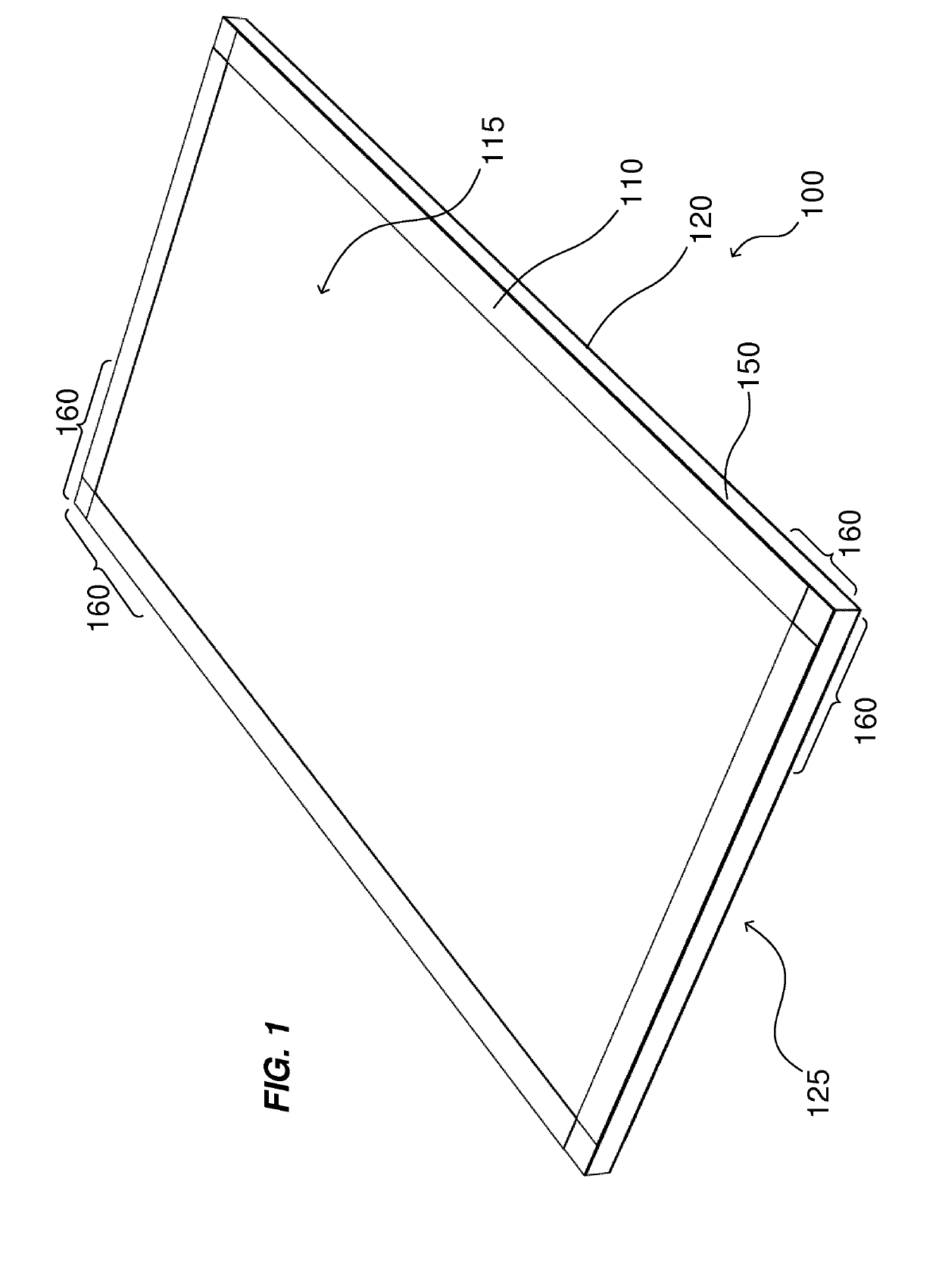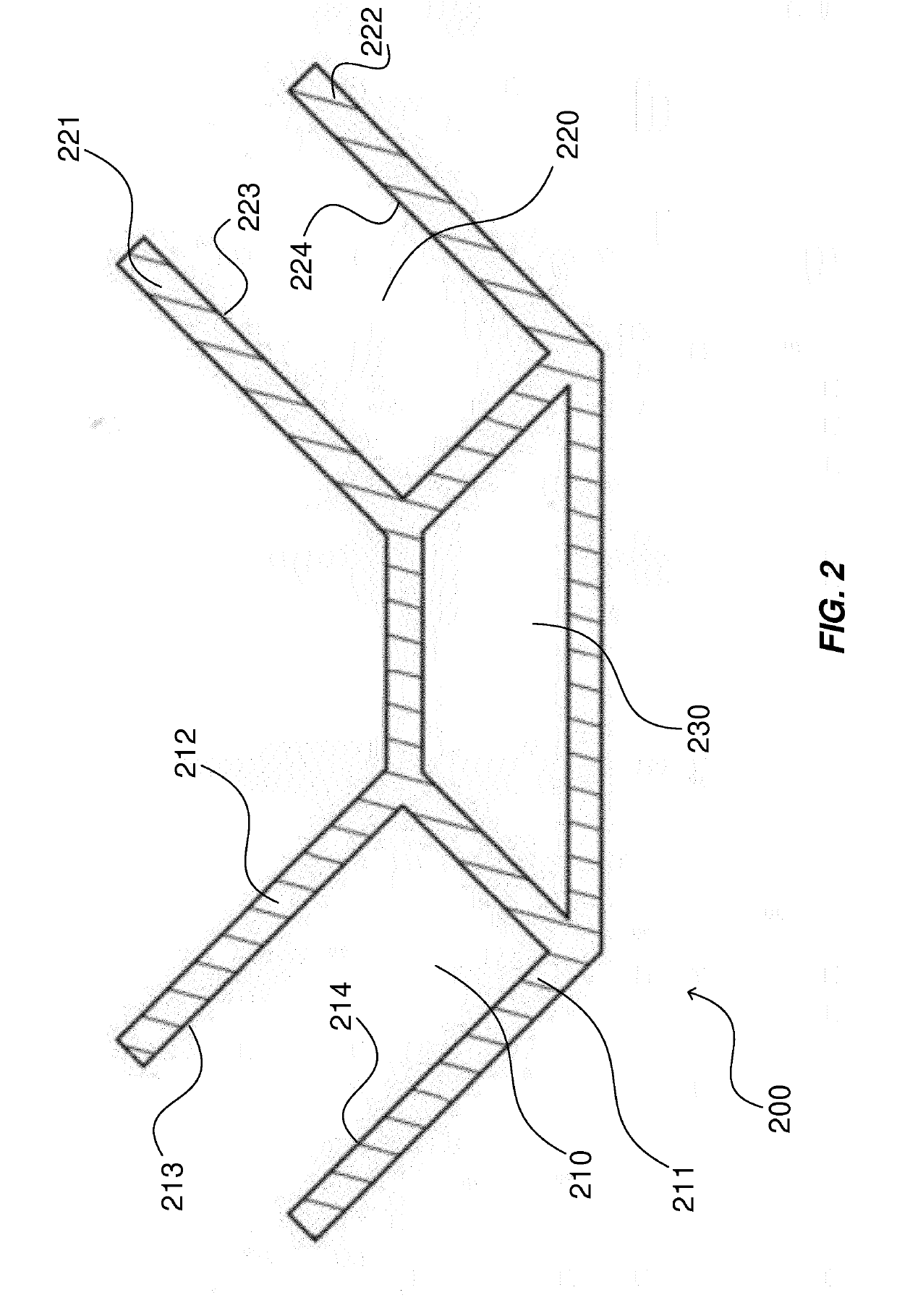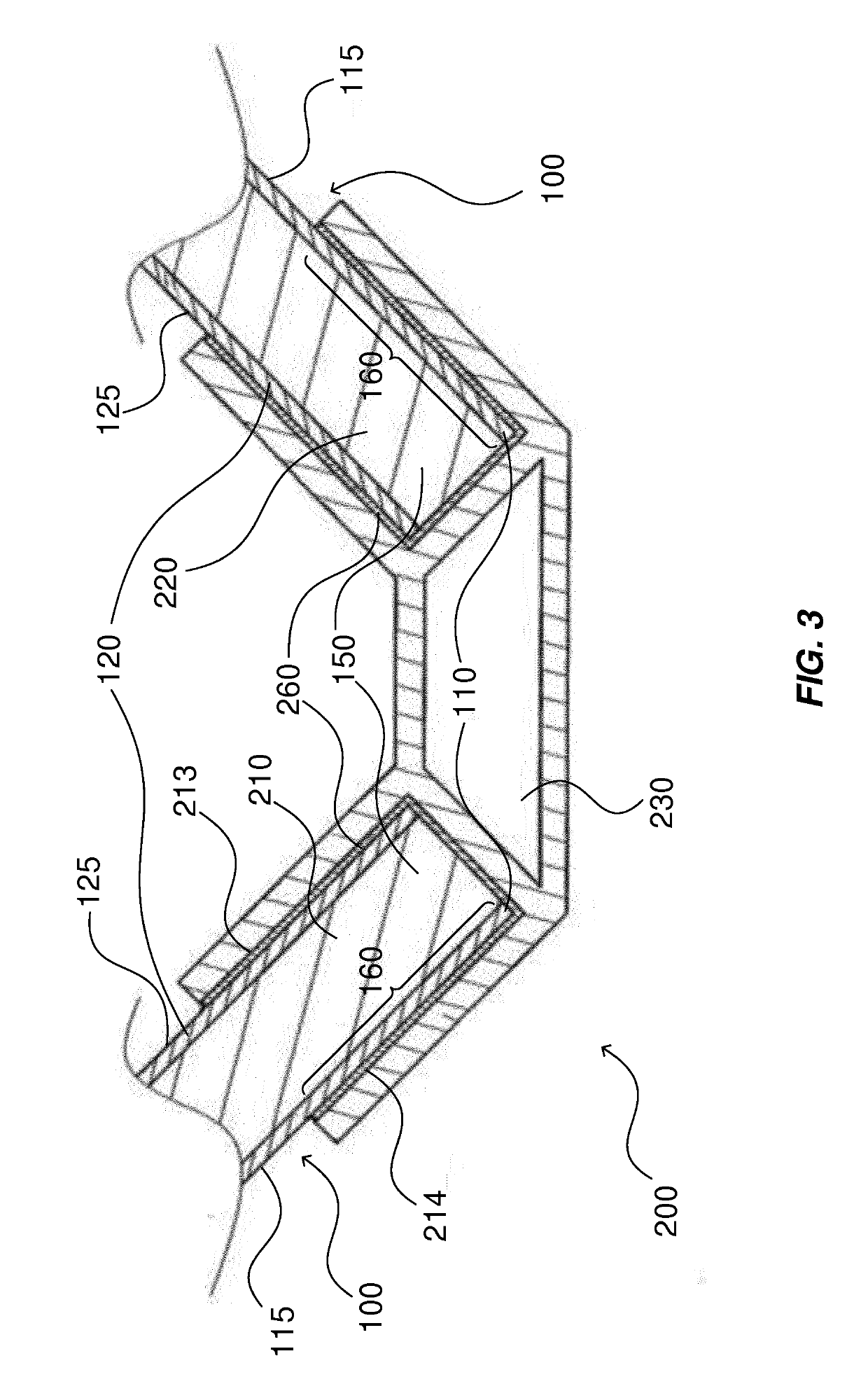Chassis for a vehicle
- Summary
- Abstract
- Description
- Claims
- Application Information
AI Technical Summary
Benefits of technology
Problems solved by technology
Method used
Image
Examples
example 1
[0074]Chassis manufacture. In FIG. 1 is shown a rectangular bottom panel of polymer foam sandwiched between two sheets of a glass fibre reinforced thermoplastic polymer material. Rectangular profile joint mounting sections extend along the right and left lateral edges and the front and rear edges of the panel. At these sections profile joints for mounting right and left lateral panels and the front and rear panels are attached to the bottom panel (FIG. 4). The profile joints are of a length so as to extend short of a section at each corner of the bottom panel, which thus remains free. FIG. 2 illustrates a transverse section of a first variety of an extruded aluminium profile. Joints are made by a profile into sections of desired length. The profile has a central hollow trapezoid portion forming a channel and consists of a base section, a top section, and lateral sections. From the lateral sections extend in a perpendicular relationship outer and inner tongues forming rectangular sli...
example 2
[0078]First variety of profile joint. The profile joint of FIG. 2 can be varied in many ways. In a first variety of the joint shown in FIG. 7 the trapezoid central structure is substituted by a circular or tubiform structure comprising tongue bases extending in a tangential manner in an angle of 90°. The tongues extend in a perpendicular direction from the tongue bases. The lumen of the circular structure can be used for mounting external gear such as motor, suspension and wheels. A preferred manner of mounting external gear is by inserting coupling elements in form of steel rods or tubes into the lumen and fixing them there, which rods or tubes extend from one or both ends of the tubiform structure, thus are of a length greater than the length of the profile joint. It is, of course, possible to use the profile of FIG. 2 in a similar manner, the difference being that the insert into the trapezoid channel should preferably be of trapezoid or, less preferred, of rectangular form.
example 3
[0079]Second variety of profile joint. The profile joint illustrated in FIG. 8 in transverse section comprises a trapezoid central structure comprising top portion and lateral portions, from which tongues extend in a perpendicular direction forming slits in which panels are mounted and fixed with glue. In the trapezoid base is provided a central slit providing access into the lumen. Two L-formed, outwardly extending profile sections with their bases pointing towards each other are disposed laterally of the slit. They enclose a rectangular channel housing an insert of corresponding but slightly smaller rectangular section and of a length greater than the length of the profile joint thus extending from one or both ends of the joint. The insert is kept in place by one screw or several screws of same kind. The screw is inserted through the opening between the L-formed fingers and fixed in threaded bore of the insert, which is kept in place by being pressed against inner faces of the L-f...
PUM
 Login to View More
Login to View More Abstract
Description
Claims
Application Information
 Login to View More
Login to View More - R&D
- Intellectual Property
- Life Sciences
- Materials
- Tech Scout
- Unparalleled Data Quality
- Higher Quality Content
- 60% Fewer Hallucinations
Browse by: Latest US Patents, China's latest patents, Technical Efficacy Thesaurus, Application Domain, Technology Topic, Popular Technical Reports.
© 2025 PatSnap. All rights reserved.Legal|Privacy policy|Modern Slavery Act Transparency Statement|Sitemap|About US| Contact US: help@patsnap.com



